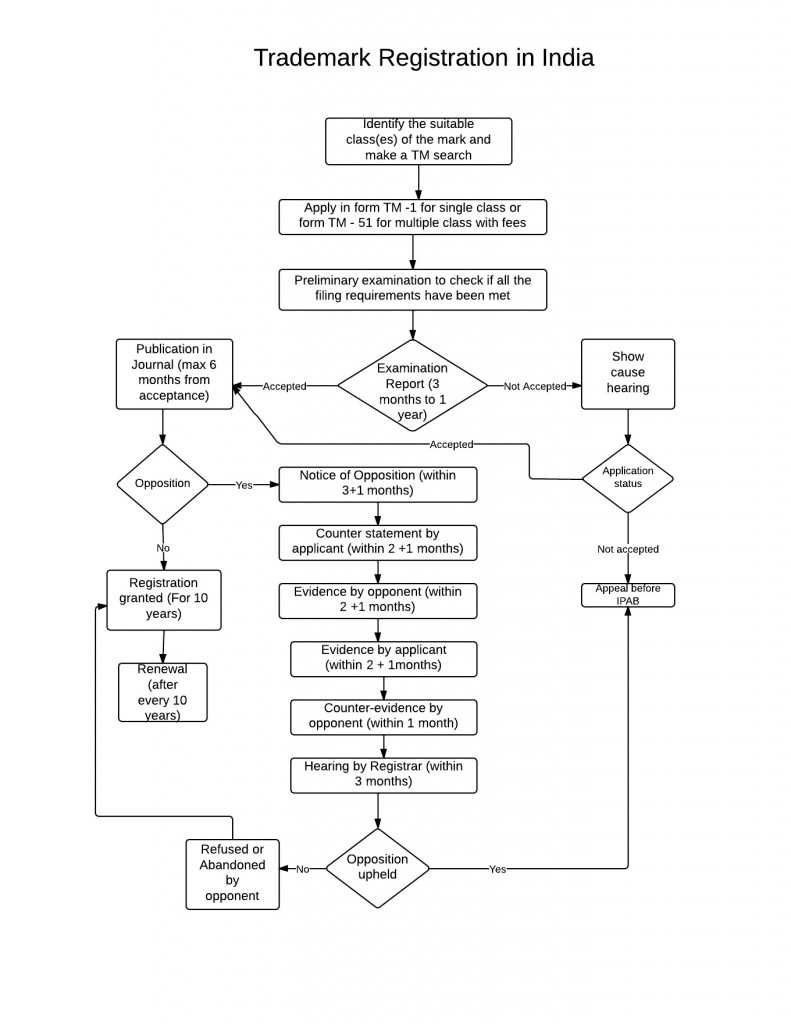In this blogpost, Haridya Iyengar, Student, Jindal Global Law School, Haryana writes about the kinds of trademarks, advantages of registering a trademark and the procedure to register a trademark.
A trademark is a symbol, name, word, device or any combination which is adopted by a company to distinguish their products from the rest. It is often referred to as brand name. The Trade Marks Act, 1999 and Trade Marks Rules, 2002 governs the laws with respects trademarks.
History of Trademarks
The first official trademark law was passed in 1940. However due to its limitations and non-use, it was replaced by the Trade and Merchandise Act, 1958. In 1994, India became part of the TRIPS Agreements which set basic standards for intellectual property rights. To meet these basic standards, a number of amendments were introduced to the trademark laws in India. These amendments were made by replacing the former act with the Trade Marks Act, 1999 and the Trade Marks Rules, 2002.
Advantages of Registering a Trademark
There are many advantages of registering a trademark. Some of them are:-
- Trademarks make it easier for your customer base to find you: Trademarks distinguish your services and products from those of your competitors. This identifies you as the source and indicates a consistent level of quality of your services and products. Trademarks also increase brand awareness and goodwill.
- Trademarks help prevent marketplace confusion: Trademarks prevent confusion as to the source of the goods and services.
- Trademarks are economically efficient tools: Trademarks create a face value in the market among competitors. Furthermore, they give your business a monopoly over the brand name.
Types of Trademarks
Under the Trade Marks Act, 1999 the different types of trademarks that can be registered are:-
- Product Trademarks: They are trademarks attached to identify the business’s products.
- Service Trademarks: They are used to identify the services of the entity. For instance, the trademark for network and broadcasting service. They help advertise the service provided.
- Collective Trademarks: These trademarks are registered in the name of groups or organizations. They help people associate members with the group during commercial activities.
- Certification Trademarks: They are certifying trademarks which help people judge the quality, material used, origin and other specific features of goods and services.
How to Register Trademarks
The registration process in India is a ‘first to file’ basis. Therefore, it is important to apply for registration as soon as possible. A trademark usually takes 2-3 years to get registered, if the trademark is not being opposed by a third party[1]. Trademark applications are handled by the Office of the Controller General of Patents, Trade Marks, Industrial Designs and Geographical Indications. Branches for these offices are available in Mumbai, Kolkata, Ahmedabad, Delhi and Chennai. The application must be filled as per territorial jurisdiction. To register a trademark in India the following steps must be followed:-
- Select a trademark agent in India: Proprietors are only allowed to file a trademark application if their place of business is in India. If this is not the case, the right holder must file a trademark application through an agent or attorney. The agent or attorney usually takes care of the trivialities such as searching, preparing, filing and prosecution of the trademark.
- Determination of the eligibility and availability of the trademark: The agent usually starts the registration process by determining whether the trademark is eligible for registration and conducting a clearance search to see if there is a similar mark in the office of the controller general.
- Completing the application form and filing: If the trademark agent has the power of attorney from the right holder he can complete and file the application form. The form will require details such as name and address of the proprietor, a description of the goods and services associated with the mark, whether the mark is in use and a copy of the mark.
- Review by the trademark office: The trademark office reviews the application to see if it is complete and then allots the application a number. If the trademark is registered, this number becomes the registration number.
- Preliminary approval and publication, show cause hearing or rejection of the application: The trademark association determines if the application is barred from registration either on absolute or relative grounds for refusal as prescribed in the Trade Marks Act, 1999. After this, they issue an examination report within a period of one month. Depending on the examination report the registrar of the trademark determines whether the application must be accepted, rejected or put up for ‘show cause ‘ During a ‘show cause hearing’ subject to the facts an application might be rejected, accepted or accepted with certain limitations. If the application is rejected, the applicant can appeal at the Intellectual Property Appellate.
- Registration: Within the term of three months publication in the Trademarks Journal, if not opposed by a third party, the trademark will proceed for registration and the trademark authority will proceed to give a registration certificate.
Conclusion
Trademarks are a cost effective of way of advertising your business. It is important to register a trademark as soon as possible.
[1] http://newdelhi.usembassy.gov/iprtrademark.html#_ftn2












